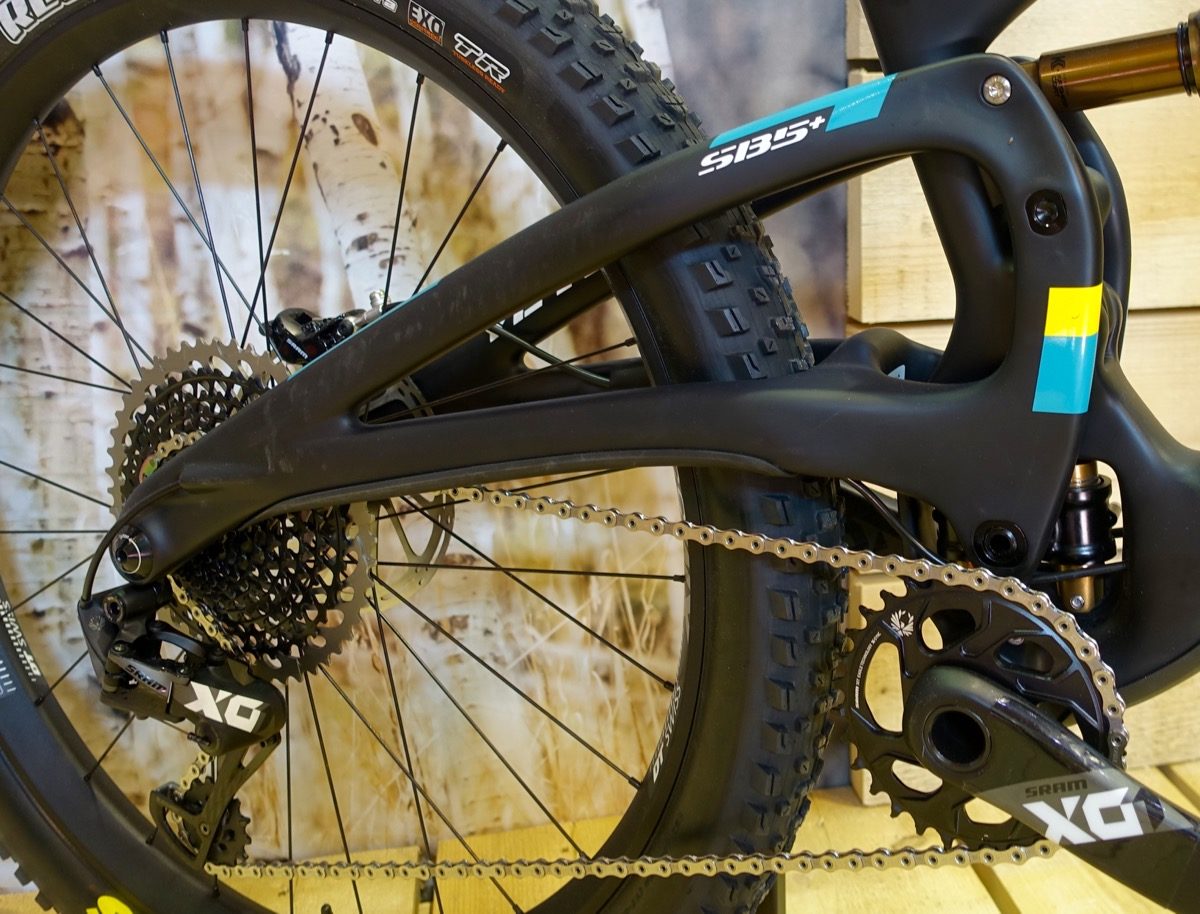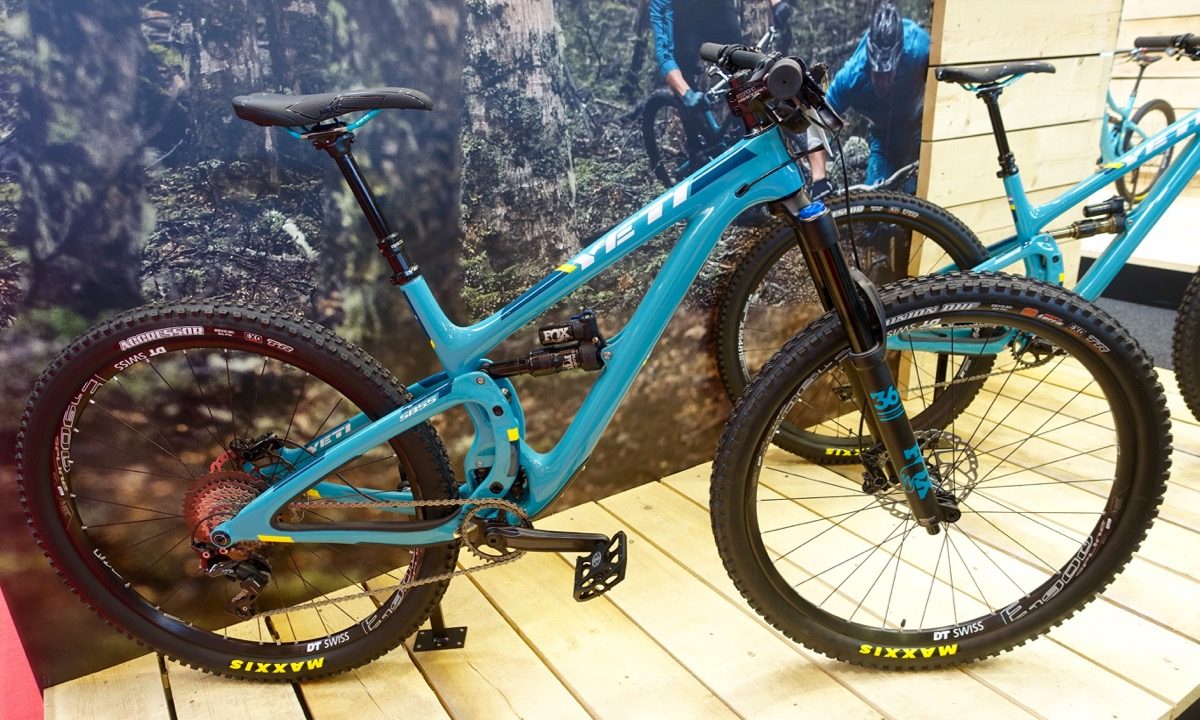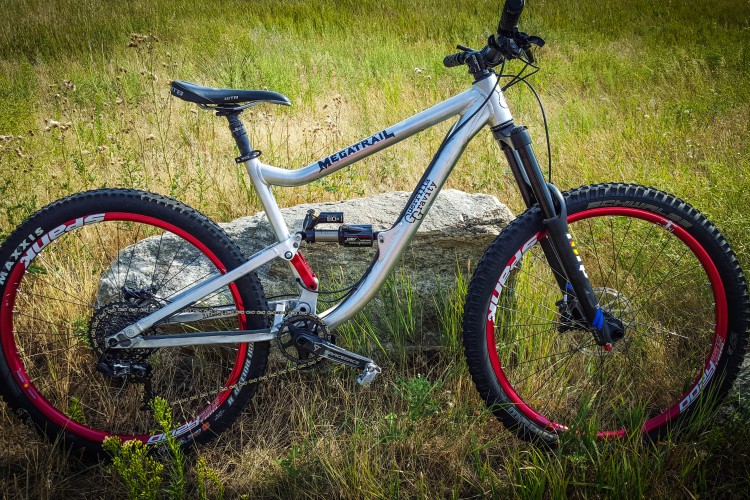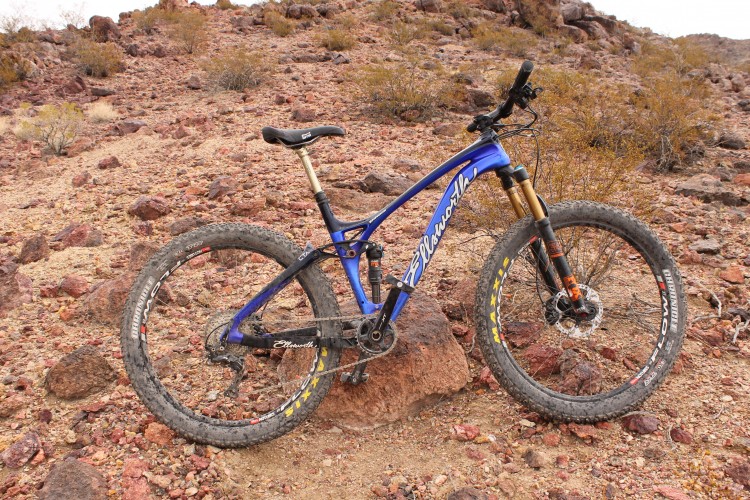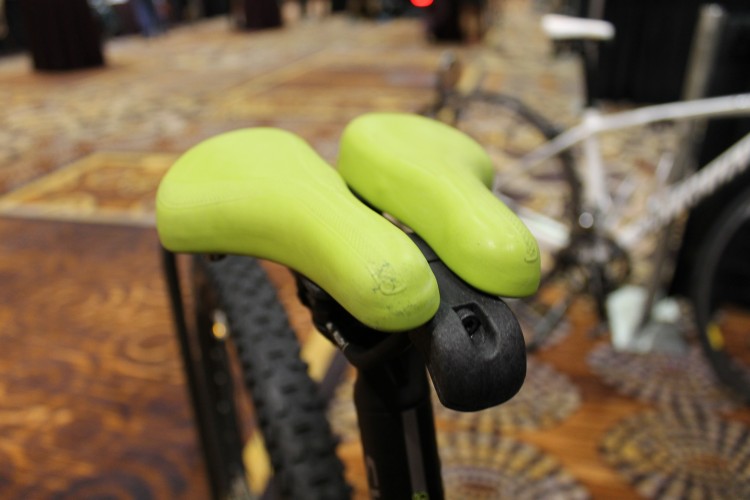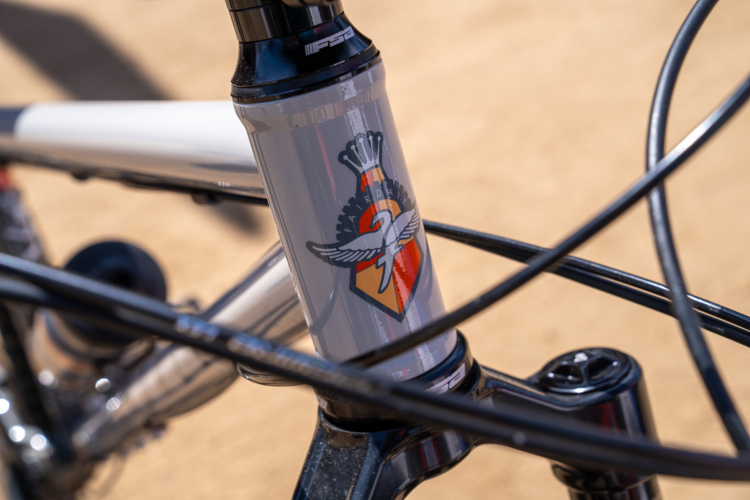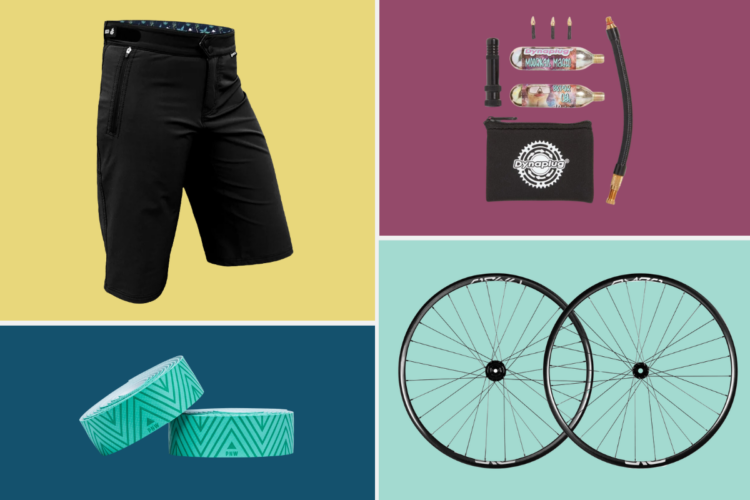
Yeti has just released their first ever 27.5 plus-sized mountain bike, the SB5+. Based on the popular SB5, the 5+ has very similar specs, but sports a slightly steeper head tube angle, at 67.1 degrees vs 66.5 in the standard 5.
To fit the wheel into the rear end, Yeti utilized an elevated chainstay and totally redesigned rear triangle. But don’t fret—it’s not nearly as elevated as the new Salsa Woodsmoke, which evoked visceral negative reactions from many readers, so don’t be afraid that Yeti is losing it’s dialed, top-level-bling look.

The SB5+ I looked at was spec’ed with an Eagle X01 Drivetrain, Fox 34 fork, Fox Float rear shock, SRAM Guide brakes, DT Swiss XM551 wheels, and Maxxis Rekon+ 2.8” tires. Yeti says that you can fit up to 3” tires in the rear end but beyond that, you’ll have issues.
New Carbon Layup Options
Speaking of bling, the bling is coming down to a more affordable level. Let’s put “affordable” in scare quotes, as the bargain-basement build kits with a new, more affordable carbon start at about $4,699 or $4,799 for complete models, then go up from there.
This newer, more affordable carbon is available in the new “Carbon” models, which has a frame and carbon layup to the previous “c” models. Now, in addition, Yeti is offering new “Turq” carbon frames, which offer an improved carbon layup, dropping weight off the previous frame. If you remember the “Enduro” models that Yeti rolled out last year… those are gone. Their carbon frames are now available in just two different levels, called “Carbon” on the low end and “Turq” on the high end.
New SB5 and Yeti Beti
Along with this revamped carbon and new SB5+, the standard SB5 gets a revamp, including internal cable routing, a port down near the bottom bracket junction for ease of cable routing, and metric suspension. However, possibly the most important change is that the engineers have been able to remove a seat tube brace, which effectively lowers the standover height. In the Extra Small Beti model, they claim that they’ve achieved the lowest standover height in the mountain bike industry, beating out Pivot who has claimed the title for years.
Is it A LOT lower than the Pivot? No, but it does go to show that Yeti is committed to their female-specific Beti line.











